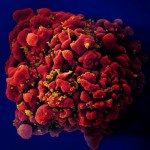Link to Pubmed [PMID] – 19741595
Mucosal Immunol 2009 Nov;2(6):478-85
Intestinal lymphoid tissues face the challenging task of inducing adaptive immunity to pathogens, yet maintaining homeostasis with the enormous commensal microbiota. To that aim, the ancient partnership between self and flora has resulted in the generation of a unique set of lymphoid tissues capable of constant large-scale reformatting. A first set of lymphoid tissues, the mesenteric lymph nodes and Peyer’s patches, are programmed to develop in the sterile environment of the fetus, whereas a second set of lymphoid tissues, the tertiary lymphoid tissues, are induced to form by the microbiota and inflammation. The diversity of intestinal lymphoid tissues confers the flexibility required to adapt the number of immune inductive sites to the size of the flora and the extent of the pathogenic threat. The result is a functional superorganism combining self and microbes for the best possible symbiosis.

